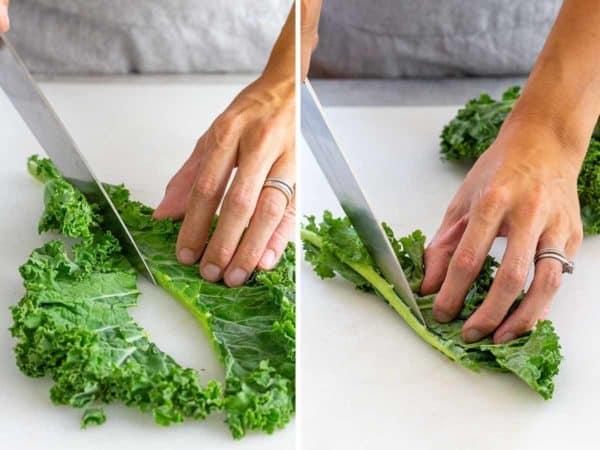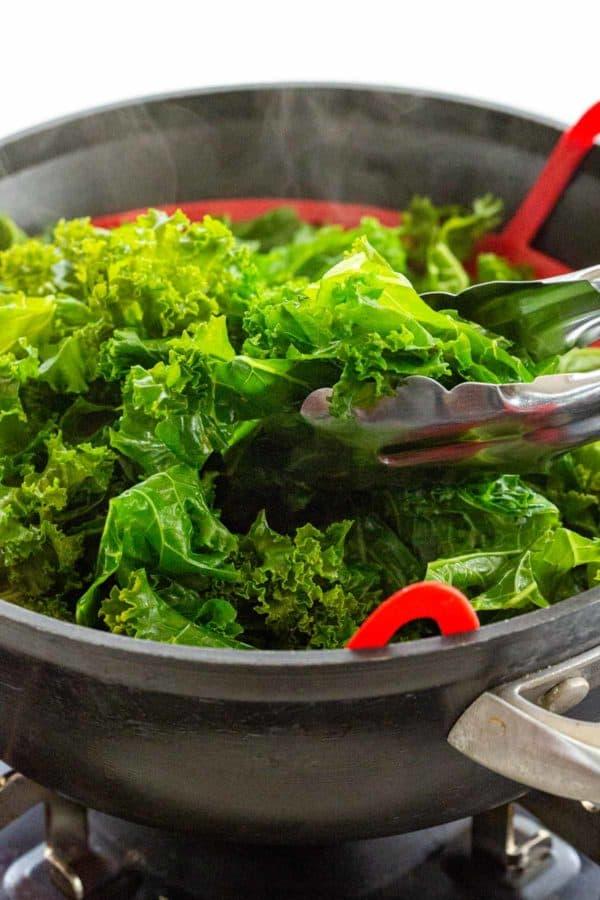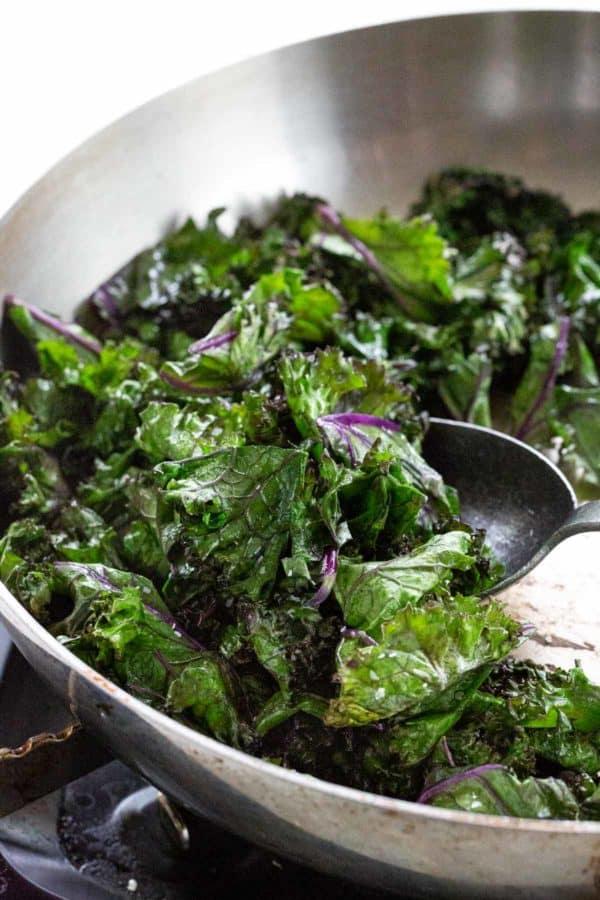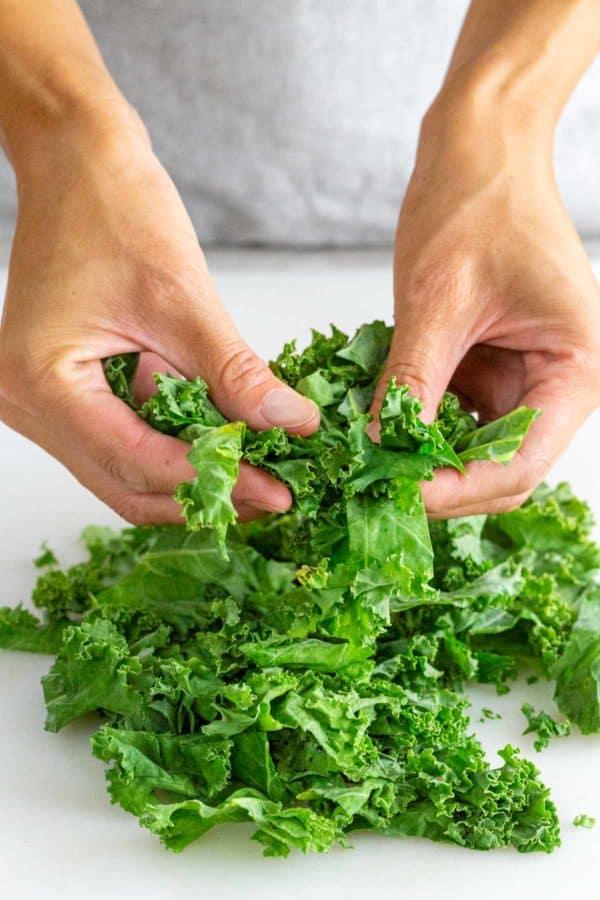Kale has been the underdog leafy green. That’s because most of us aren’t quite sure how to tame the natural bitterness and rough texture, until now! Discover two simple cooking methods that will transform kale into a flavorful and nutritious dish.

Kale, a superfood with numerous health benefits, has emerged as a popular ingredient in mainstream restaurant menus, salads, and even pasta. It can also be transformed into crispy kale chips. In this article, I will show you how to reduce the harsh flavors of kale and cook it with ease using two different methods: steaming and sautéing.
How to Prepare Kale


Before cooking kale, it’s important to remove the fibrous stem. There are two ways to do this. You can either cut the stem off by laying the leaf flat on a cutting board and removing the tender leaves from the sides, or you can fold the leaf in half and cut away the stem. Once the stem is removed, you can proceed to cut the kale into smaller pieces, about 1-inch in size.
Cooking Methods: Steaming and Sautéing

Steamed Kale
Steaming kale creates a hot and moist environment that tenderizes the leaves. Simply cover and cook the kale for about 3 to 5 minutes, and you’ll notice the dark green leaves transform into bright green. The leaves will wilt down significantly, reducing about 40% of their volume. Season lightly with salt and freshly cracked black pepper to enjoy this quick and healthy side dish. Steamed kale can also be added to breakfast scrambles for a nutritious boost.

Sautéed Kale
Kale leaves are robust and do well when sautéed in hot oil. The dry-heat cooking method creates toasted flavors that you won’t achieve by steaming. Heat a sauté pan or wok over medium heat, add kale, and stir occasionally for a few minutes until the leaves begin to wilt. Season with salt and pepper at this stage to avoid drying out the moisture from the cut leaves. For added flavor, you can also add minced garlic towards the end of cooking or garnish with freshly shredded aged cheese.
Selecting and Storing Kale
When selecting kale, look for vibrant, crisp leaves without wilting or yellowing. The stems should be intact. It’s best to clean kale just before using it. Store it in a loose plastic bag in the refrigerator, and it will stay fresh for about a week.

Massaging Kale for a Better Taste
Raw kale might not have much taste, but massaging, chewing, or chopping it triggers a chemical reaction. When the cell membranes of the leaves are ruptured, pungent and bitter notes rise from sulfur-containing compounds called isothiocyanates. To reduce some of the bitterness, simply rinse the chopped leaves after massaging them.
Recipes with Kale
Once you’ve mastered the art of cooking kale, you can explore various recipes that incorporate this nutritious leafy green. Here are a few ideas to get you started:
- Sauteed kale with peppers and shallots
- Braised kale
- Kale chips
For more delicious kale recipes, visit Ekilove.
Now that you know how to cook kale in two different ways, you can enjoy this versatile superfood as a tasty side dish or incorporate it into your favorite recipes. Experiment with both methods to explore the distinct flavors and textures each one brings to this hearty green vegetable. Happy cooking!



